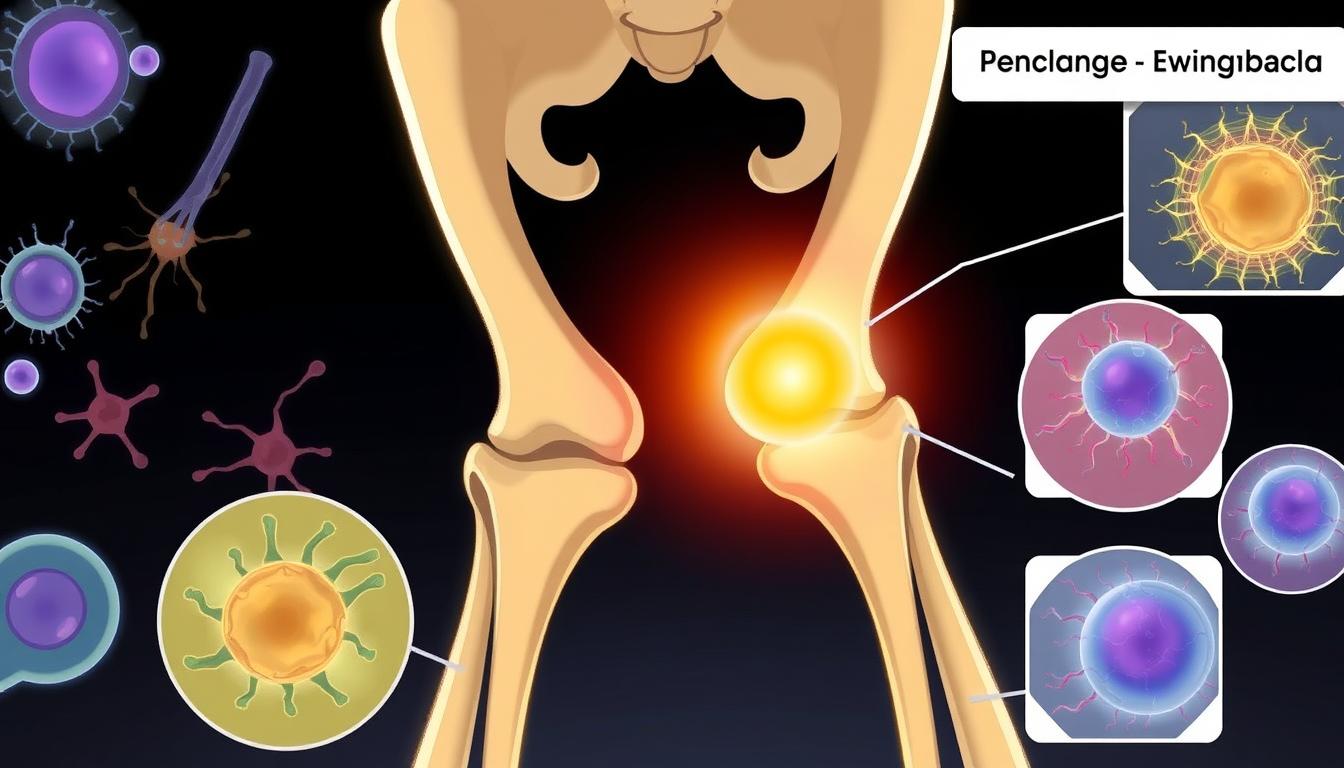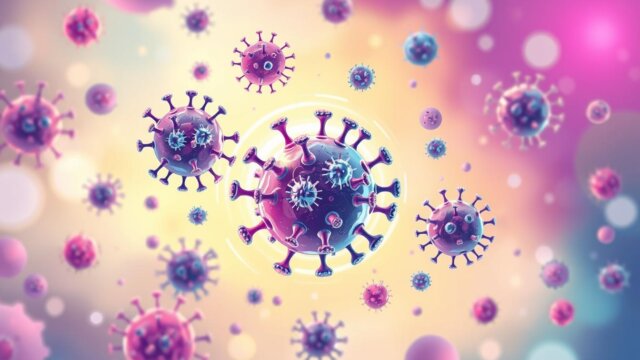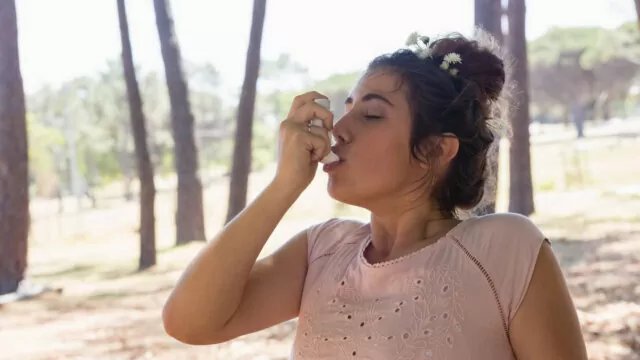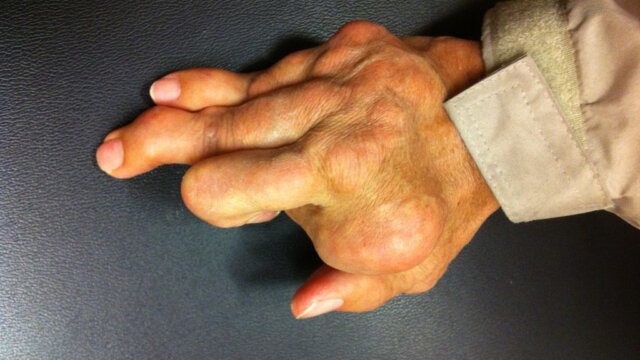FTC disclaimer: This post may contains affiliate links and we will be compensated if you click on a link and make a purchase.
Ewing’s sarcoma is a rare cancer that affects about 200 kids and young adults each year in the U.S.. It’s a serious bone and soft tissue cancer. It mostly hits people of European descent, with a bit more men than women.
Even with better treatments, strong medicines can cause big problems. This shows why finding cancer early and getting full care is so key.
Key Takeaways
- Ewing’s sarcoma is a rare type of bone and soft tissue cancer that primarily affects children and young adults.
- It most commonly starts in the leg bones and pelvis, but can develop in any bone in the body.
- Individuals of European ancestry have a higher risk of developing Ewing’s sarcoma compared to other ethnic groups.
- Effective treatment often requires a combination of chemotherapy, surgery, and radiation, which can lead to significant side effects.
- Regular monitoring and follow-up care are crucial to manage long-term complications and monitor for potential recurrence.
What is Ewing’s Sarcoma?
Overview of Ewing’s Sarcoma
Ewing’s sarcoma is a rare bone and soft tissue tumor. It mainly hits kids and young adults, especially during the teen years. It’s the second most common bad bone tumor in this age group, making up about 1 percent of childhood cancers.
This disease grows fast and can harm nearby healthy tissue. It often starts in the bones of the legs, pelvis, arms, or chest wall. But it can also show up in soft tissues.
Ewing’s sarcoma is part of the Ewing’s Family of Tumors (EFT). This group includes Ewing’s sarcoma of the bone, soft tissue Ewing’s sarcoma, primitive neuroectodermal tumor (PNET), and Askin’s tumor. Changes in chromosomes 11 and 22 help cause Ewing’s sarcoma.
Knowing about this rare cancer is key. It helps spot symptoms, get the right tests, and find a good treatment plan.

“Ewing’s sarcoma is a rare and aggressive type of cancer that primarily affects children and young adults, often with devastating consequences if not detected and treated early.”
Symptoms of Ewing’s Sarcoma
Common Signs and Symptoms
A lump or mass in a bone or soft tissue is a key Ewing’s sarcoma sign. This is often seen with bone pain and swelling or tenderness. Kids with this condition might have surgery to save their limb or, rarely, a special amputation called rotationplasty.
Systemic Symptoms
Patients with Ewing’s sarcoma may also have systemic symptoms like fever, fatigue, and unintentional weight loss. These symptoms can change based on the tumor’s location and size. It’s crucial for kids and young adults to tell their doctors about any ongoing or worrying Ewing’s sarcoma symptoms.
After surgery, kids usually stay in the hospital for two to five days. They might also get radiation therapy to kill cancer cells without harming healthy ones. Some hospitals, like the Roberts Proton Therapy Center, offer proton therapy, a special kind of radiation treatment.
Regular check-ups are needed to watch for Ewing’s sarcoma coming back and to handle treatment side effects. The Children’s Hospital of Philadelphia (CHOP) has a great track record of helping kids with Ewing’s sarcoma live better lives.
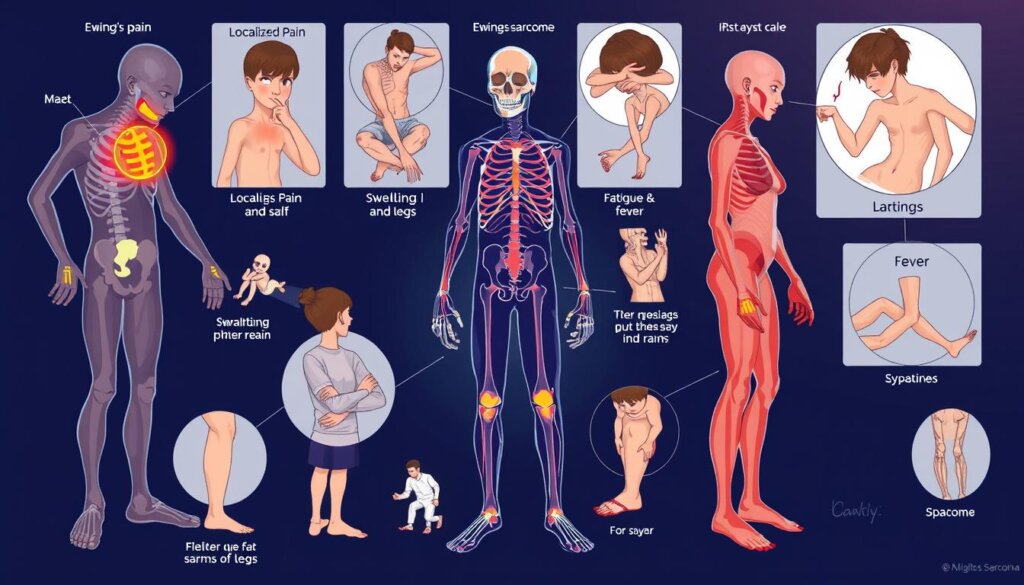
Causes and Risk Factors
Ewing’s sarcoma is a rare bone and soft tissue cancer. We don’t know exactly why it happens. But, we do know some genetic changes and risk factors are linked to it.
Genetic Changes and DNA Mutations
The EWSR1 gene is often changed in Ewing’s sarcoma. This change makes cells grow and divide without control. This genetic change is found in most cases of Ewing’s sarcoma. But, how it leads to the disease is still being studied.
Risk Factors
Not much is known about who gets Ewing’s sarcoma. But, being of European ancestry and young are big risk factors. Things like diet and smoking don’t seem to increase the risk.
Children with Ewing’s sarcoma don’t have clear links to radiation or chemicals. Family genetic changes also don’t seem to be a big risk factor.
Even though we don’t know all the causes, catching symptoms early is key. This helps in diagnosing and treating Ewing’s sarcoma quickly.
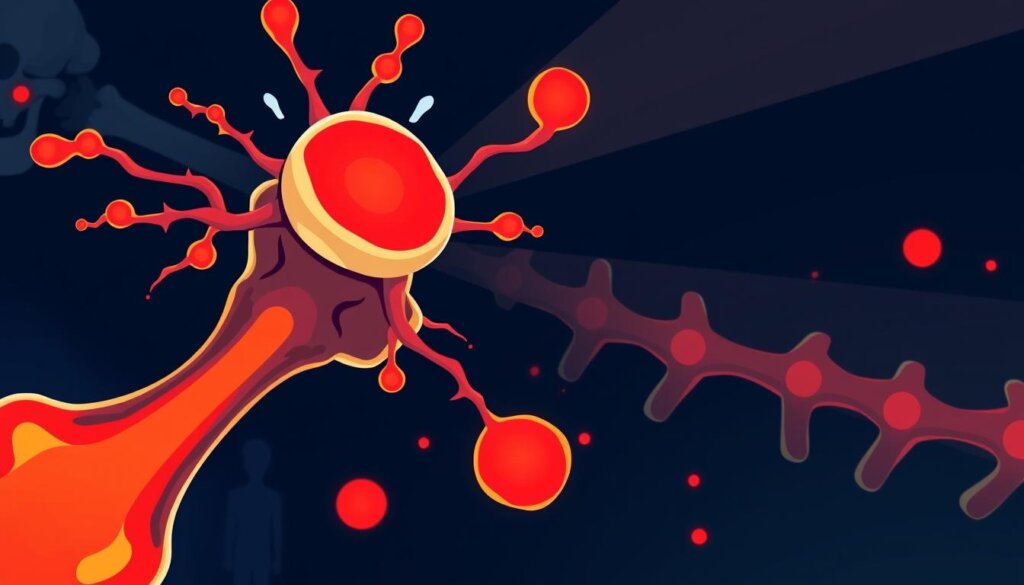
Ewing’s Sarcoma
Ewing’s sarcoma is a rare and aggressive cancer. It mainly affects bones and soft tissue. It’s the second most common bone tumor in kids and teens.
This cancer often spreads to other parts of the body, like the lungs. It needs quick and thorough treatment for the best results. Kids and young adults between 10 and 20 years old are most likely to get it.
Survival rates vary. Patients with standard-risk and localized disease have a 70-80% chance of survival. But, those with metastatic disease face a 30% survival rate.
Ewing sarcomas have a unique genetic fusion, like EWSR1-FLI1 in 85% of cases. Rare mutations include STAG2, TP53, and CDKN2A deletions. There are racial and sex-related differences in outcomes.
Research is ongoing to improve early detection and treatment. The goal is to reduce side effects, increase survival rates, and improve quality of life.
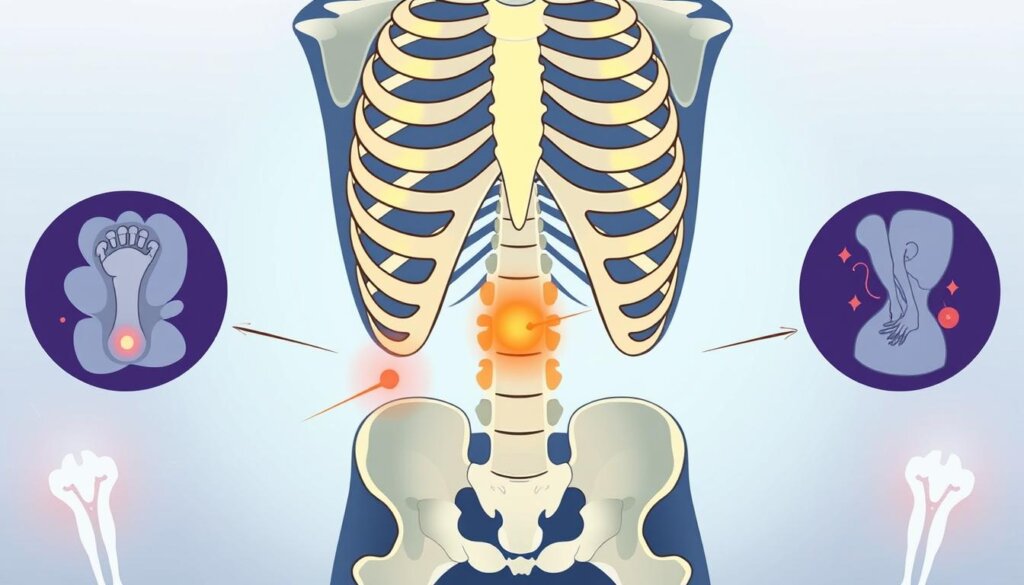
Ewing sarcoma is rare in kids, but not the only bone cancer they face. Osteosarcomas are the most common in children and teens. Other types are more common in adults.
Ewing’s sarcoma is a tough disease. But, thanks to research and treatment advances, doctors are working hard to help those affected.
Ewing’s Sarcoma Facts | Statistics |
|---|---|
Incidence | About 1.7 children out of 1 million under the age of 15 develop Ewing’s sarcoma. |
Anatomical Location | Approximately 76% of cases of Ewing’s sarcoma occur in the long bones like the femur, tibia, and humerus, along with bones of the pelvis. |
Ewing’s Family of Tumors (EFT) | There are four types of cancer in the Ewing’s Family of Tumors: Ewing’s sarcoma of bone, Ewing’s sarcoma of soft tissue, primitive neuroectodermal tumor (PNET), and Askin’s tumor (a PNET occurring in the chest bones). |
Treatment Approaches | Surgery, radiation, and chemotherapy (using combinations of drugs like vincristine, dactinomycin, cyclophosphamide, and doxorubicin) are commonly used to treat Ewing’s sarcoma. |
Rehabilitation | Patients with Ewing’s sarcoma often undergo rehabilitation with physical therapy post-surgery for the restoration of function. |
Diagnosis and Staging
To find Ewing’s sarcoma, doctors use physical checks, imaging tests, and a biopsy. These steps are key to confirming Ewing’s sarcoma, seeing how big the tumor is, and where it is. They also help figure out the cancer’s stage.
Scans like X-rays, CT scans, and MRI are very important. They help doctors see the tumor’s size, where it is, and if it has spread.
- About 1 in 5 Ewing sarcoma patients will have an obvious spread of the cancer that is found through imaging tests.
- Most metastatic Ewing tumors spread to the lungs, other bones, or the bone marrow.
- All Ewing tumors are considered high-grade (G3) tumors.
The American Joint Committee on Cancer (AJCC) staging system for bone cancers looks at the tumor size, nearby lymph nodes, spread to other organs, and tumor grade. Ewing tumor stages are from I to IV (1 to 4) in Roman numerals, with possible further divisions.
Extraosseous Ewing (EOE) tumors, which are outside the bone, are staged like soft tissue sarcomas. They are graded as high-grade (G3) tumors. Soft tissue sarcoma staging looks at the tumor size, lymph node spread, metastasis, and tumor grade.
Parameter | Ewing Sarcoma Staging | Soft Tissue Sarcoma Staging |
|---|---|---|
Primary Tumor Size | Yes | Yes |
Lymph Node Involvement | Yes | Yes |
Metastasis | Yes | Yes |
Tumor Grade | Yes | Yes |
Ewing tumor stages are shown in Roman numerals, from I to IV (1 to 4), sometimes further subdivided.
“Survival after recurrence of Ewing’s sarcoma family of tumors ranges between 23% to 47% (J Clin Oncol, 2005). Primary disseminated multifocal Ewing sarcoma survival rates were reported from 18% to 40% (J Clin Oncol, 2010). Local treatment value in patients with primary, disseminated, multifocal Ewing sarcoma (PDMES) was highlighted (Cancer, 2010). High-dose chemotherapy and autologous stem-cell rescue in localized high-risk Ewing sarcoma improved outcomes compared to standard chemotherapy (J Clin Oncol, 2018). The results of the Euro-E.W.I.N.G.99 and Ewing-2008 trials were significant for survival rates after relapse in Ewing sarcoma patients (Pediatr Blood Cancer, 2011).”
Treatment Options
Ewing’s sarcoma is a rare and aggressive bone cancer. A full treatment plan is needed for the best results. Treatment usually includes chemotherapy, local control therapies, and sometimes targeted therapies.
Chemotherapy
Chemotherapy is key in fighting Ewing’s sarcoma. It helps shrink the tumor before surgery or radiation. It also kills any cancer cells left after treatment. New chemotherapy methods have helped more people survive.
Local Control Therapies
Local control therapies like surgery and radiation get rid of the main tumor. Surgery tries to take out all cancer cells. Sometimes, this means removing part of a bone or even a limb.
Radiation therapy kills any cancer cells left after surgery. It’s also used instead of surgery.
Orthopedic surgeons do complex surgeries to save limbs. The hospital’s Proton Therapy Center uses advanced radiation. This helps control cancer better with less harm to the body.
Targeted therapies might be used if other treatments don’t work. Clinical trials offer new ways to treat Ewing’s sarcoma.
The treatment plan for Ewing’s sarcoma is made just for each person. It depends on the cancer’s size, location, and stage. Places like the Children’s Cancer Hospital have the best care for this cancer.
“Childhood cancer mortality decreased by more than 50% between 1975 and 2020. The 5-year survival rate for Ewing sarcoma has gone up a lot. This gives hope to patients and their families.”
Follow-up Care and Monitoring
Surviving Ewing’s sarcoma means regular check-ups are key. Your healthcare team will work with you to watch for cancer return or treatment side effects. They’ll do physical exams, imaging tests, and lab work to keep an eye on you.
In the first few years, you’ll see your doctor often. You’ll have tests like X-rays and CT scans every 2 to 3 months. Even later, keep going to these appointments because Ewing’s tumors can come back years later.
They’ll also check your heart. Some chemo drugs, like doxorubicin, can harm your heart over time. You’ll have blood tests, like echocardiograms, to check your heart.
Your team will watch for cancer and treatment side effects. This includes heart or lung problems and changes in growth or fertility. The Children’s Oncology Group has guidelines to help with these issues.
Ewing’s sarcoma can affect how you look and feel. Support services are available to help with these issues. Use physical therapy, occupational therapy, and counseling to help with recovery and well-being.
Remember, your follow-up care is crucial for your long-term health. Work with your healthcare team and use available resources to overcome Ewing’s sarcoma survivorship challenges. This way, you can thrive in the future.
Prognosis and Survival Rates
The outlook for Ewing’s sarcoma varies a lot, based on several factors.ok> The 5-year survival rate for early Ewing’s tumors is 82%. For tumors that have spread, it’s 71%. And for distant tumors, it’s just 39%. The overall 5-year survival rate is 63%.
Other things can also change the outlook. These include the size of the tumor, where it is, and blood LDH levels. Also, how well the tumor responds to treatment and the patient’s age.
Research shows that early treatment can lead to a 5-year survival rate of 82%. But, if the cancer spreads, survival rates drop. They are 70% for nearby spread and 39% for distant spread.
Other factors like tumor location, size, LDH levels, and gender also matter. Females tend to do better than males. Also, about 25% of patients see their cancer come back, making follow-up care key.
Even with a 5-year survival rate of about 80%, treatment has gotten better. Now, combining chemotherapy with surgery or radiation helps more patients. Early diagnosis and aggressive treatment are still key to the best results.
“Prompt diagnosis, aggressive treatment, and close monitoring are essential for achieving the best possible long-term outcomes in Ewing’s sarcoma.”
Conclusion
Ewing’s sarcoma is a rare and aggressive cancer. It needs a deep understanding of its symptoms, causes, and treatments. Thanks to medical progress, many patients are now living better lives.
The disease mostly affects young adults, with most cases between 15 and 40 years old. Sadly, 68% of patients passed away during the study period. The survival rates for bone and joint Ewing’s sarcoma are improving.
Early detection and quick treatment are key to fighting Ewing’s sarcoma. It’s most common in teens and young adults. After treatment, regular check-ups are vital for long-term health.
Patients with distant cancer or tumors in the pelvis face tougher challenges. Those not responding well to chemotherapy or getting treatment for less than a year also have poorer outcomes.
Raising awareness about Ewing’s sarcoma is important. It helps people spot symptoms early and get the best care. In the US, it affects about 0.1 in 100,000 people each year. More research and teamwork are needed to beat this cancer.
FAQ
What is Ewing’s sarcoma?
Ewing’s sarcoma is a rare cancer that affects bones and soft tissue. It mostly happens in kids and young adults. It often starts in the leg bones or pelvis and can spread to the lungs.
What are the common symptoms of Ewing’s sarcoma?
Signs include a lump or mass in bones or soft tissue, bone pain, and swelling. Patients might also feel fever, tiredness, and lose weight without trying.
What causes Ewing’s sarcoma?
The exact cause is still a mystery, but it involves genetic changes. A common genetic change is a translocation involving the EWSR1 gene. This leads to uncontrolled cell growth.
How is Ewing’s sarcoma diagnosed and staged?
Doctors use physical exams, imaging tests like X-rays and CT scans, and biopsies. These steps help confirm the cancer, find out how far it has spread, and stage it.
What are the treatment options for Ewing’s sarcoma?
Treatments include chemotherapy, surgery, and radiation. Chemotherapy is key because it targets cancer cells in the body.
What is the prognosis and survival rate for Ewing’s sarcoma?
Survival rates depend on the cancer’s stage, where it is, and how well it responds to treatment. Thanks to new treatments, many patients are living longer.
